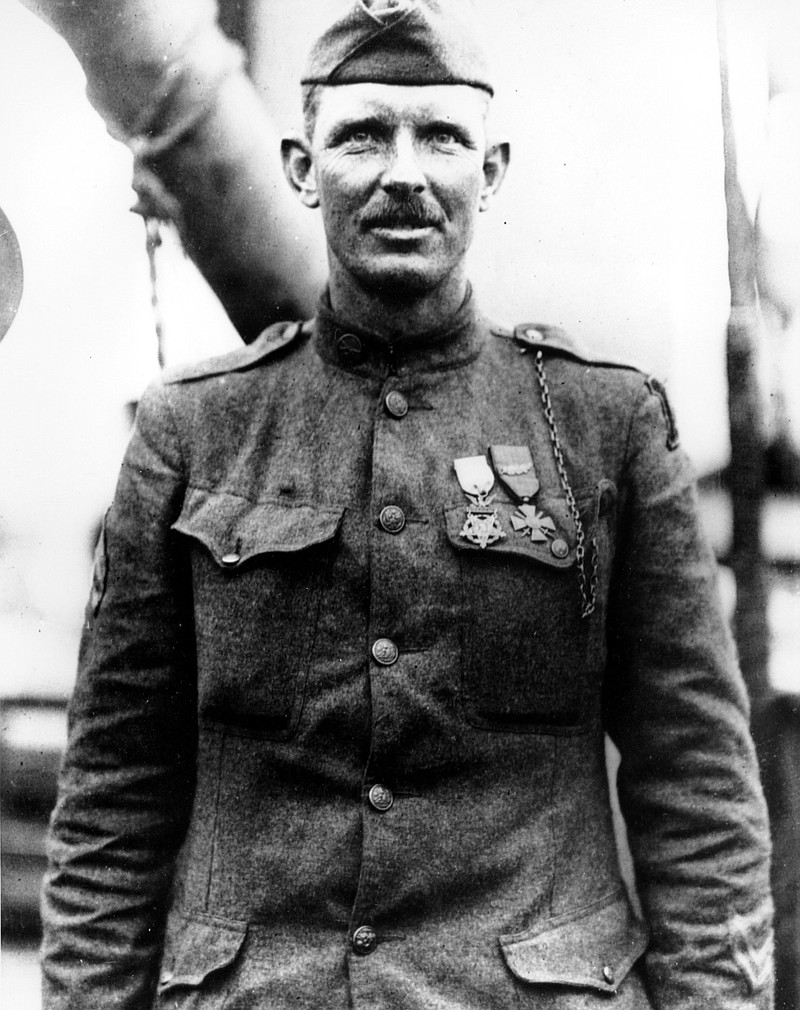One of the greatest heroes of World War I was an unlikely character: An East Tennessee man opposed to the war.
Alvin York, a native of Fentress County, Tennessee, he was an impeccable shot. He received his first rifle at just 7 years old and began providing for his family by winning shooting competitions in his youth, according to the Museum of East Tennessee History.
His boyish interests became more rough and tumble in his adolescence, establishing a reputation as a heavy drinker and brawler.
York's behavior reportedly changed in 1914 when a close friend was killed in a bar fight. Subsequently, York joined the Church of Christ in Christian Union.
With his newfound faith, York postured himself against violence. Then his draft letter came.
York, then 29, attempted to skip the draft as a conscientious objector based on his religion, which opposed both violence and secular politics, but was denied.
In a speech later in his life, York is quoted as calling this one of the most intimidating times in his life.
"I was worried clean through," he said. "I didn't want to go and kill. I believed in my Bible."
Ultimately, York resolved to fight despite his opposition, citing a belief that his ancestors would have wanted it that way in diary entries.
York's time in the war earned him the rank of sergeant and dozens of awards, including the Medal of Honor and French Croix de Guerre, making him one of America's most decorated war heroes.
His rich legacy specifically hinges on one heroic feat. York and 16 other soldiers were caught in a German ambush behind enemy lines and suffered heavy casualties.
When the fight was over, 25 Germans were dead and 132 captured, due in large part to York's actions.
The tale of York's role in the battle circulated when Saturday Evening Post writer George Pattullo wrote about the action in April 1919 and singled out the 30-year-old soldier's marksmanship and heroism.
"He outfought the machine-gun battalion with his rifle and automatic pistol," the 1916 story reads. "There were other Americans there but it was York's battle and only York's."
The story of York's bravery and tact in this battle and the war as a whole resonated with his home country, specifically his native Tennessee.
In 2006, the East Tennessee Historical Society partnered with the Tennessee State Parks and the Sergeant York Patriotic Foundation to honor York in a museum exhibit with items from York's homeplace, war artifacts including uniforms, dog tags and weapons, and, of course, medals bestowed for his heroism.
